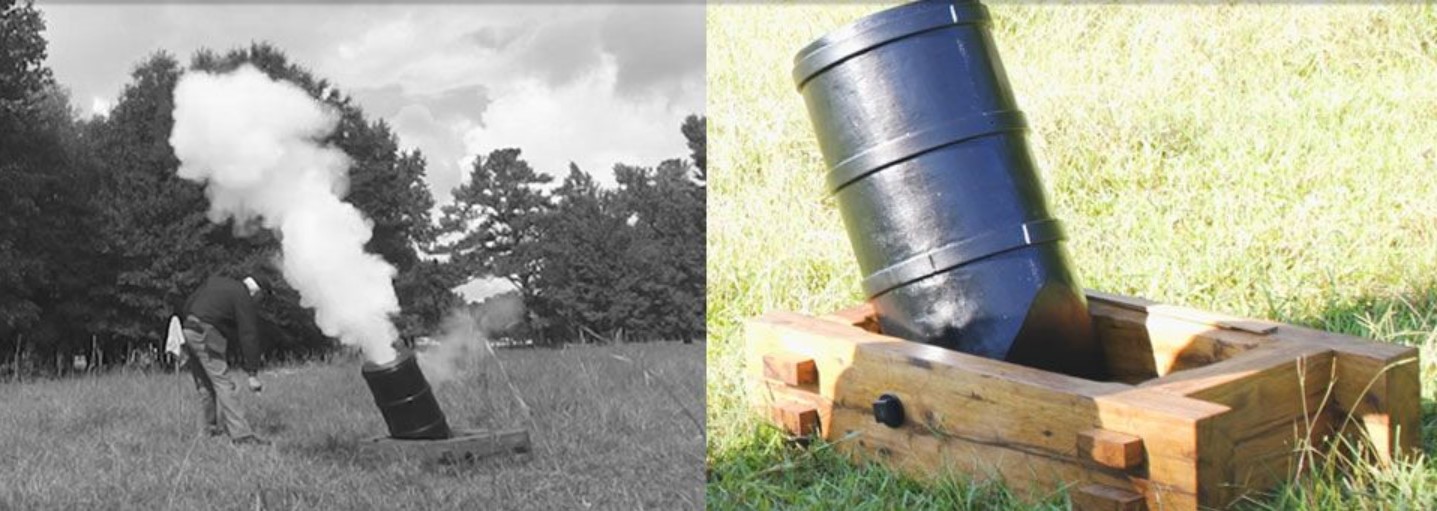Because the U.S. Grant Presidential Library is located in Starkville, Mississippi and the Vicksburg National Military Park is only a 2½-hour drive from The Starkville Civil War Arsenal, I thought a sweet gum mortar might be of interest to many of my visitors. General Grant’s soldiers were the first ones to use wooden mortars during the Civil War at the Siege of Vicksburg in July of 1863.
There are those who possess great wisdom that believe necessity is the mother of invention. If that saying is true then desperation has to be the mother of unconventional solutions to immediate problems. The perfect example of this wisdom is a mortar made from wood. It solved an immediate problem. It was very effective at a specific task. It could be made quickly with little or no expense. Wooden mortars were also disposable and biodegradable, just remove the iron bands.
Now, let’s look at what was said about the wooden mortars during the time of the Civil War.
The following report was made to the Corps Headquarters, in the Field near Blakely, Ala, April 10, 1865, to Lt. Col. John Hough, Assistant Adjutant General…
“Colonel, I have the honor to submit the following special report: During the recent siege of Spanish Fort, Ala, Bvt. Major General John McArthur (commanding this division) designed and caused to be manufactured six 12-pounder wooden mortars, to be used on the skirmish line. These mortars were made from the gum trees found growing in the vicinity of the fort.
Being light, the men carried them to the skirmish line in the advanced parallel, where they were set to bear upon the fort or any point in the front of the First Division lines. Upon experimenting with them it was found that they could be made to throw shell with perfect accuracy. They were used with great success in throwing shell in the lines occupied by the rebel skirmishers; also great injury was done the enemy by throwing the shell and arranging the fuse to cause them to explode inside his works.
They proved so essential and effective that the general caused six more to be made of the same size, and one of 24-pounder caliber. These were made by the pioneer corps of the First Division, and are so simple in construction that any mechanic of ordinary skill can make them.” – H.B. Strait, Major, 9th Minnesota Infantry
If any mechanic (craftsman) of ordinary skill can make them, I thought I might be able to build one for the museum. After building the mortar a temptation too strong to resist came over me and the end result is the following video. I hope you enjoy watching it as much as I enjoyed making it.
